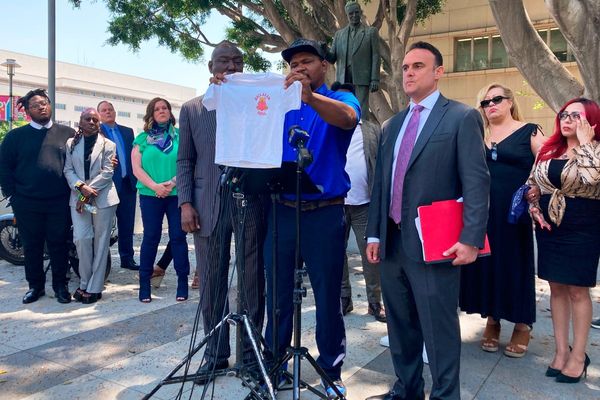
What's happening in Iran is a revolution in the making. It might not happen suddenly, write Amir Ahmadi Arian and Behrouz Boochani, but the fires of uprising have been lit
On September 17, 2022, a large crowd gathered in the town cemetery in Saqez, a small city in Kurdistan, Iran, to attend the funeral of a young woman named Zhina-Mahsa Amini.
Four days before, during a trip to Tehran, the hijab patrol officers stopped her in the street because they deemed her hijab improper. After she resisted the arrest, they beat her up, fracturing her skull, and took her to the reeducation center. She died two days later.
Her death gave birth to the largest wave of protests in the post-revolutionary Iran.
While Iran is no stranger to protests, during the month that has passed since Amini’s death, the nature of this particular revolt is different. For one thing, its geographical spread is unprecedented. Previous uprisings were either concentrated on smaller cities and rural areas, as was the case with the 2019 protests triggered by overnight trippling of the gas price, or during the Green Movement in 2009, exclusive to big cities.
In either case, you hardly heard the names of mid-sized, more conservative cities like Kerman, Yazd, and Qom. This time around, only within the first four days, out of near 400 cities, 83 had at least a handful of marches and borne witness to significant clashes between protesters and the police, and the number has only been increasing. Thanks to this broad geographic distribution, the regime’s forces are spread thin across the country, its authority diluted.
The protesters' demographics have also shifted. In tandem with its geographical expansiveness, its reach appears to be universal. On the streets, men and women from across ethnic and religious lines are standing shoulder-to-shoulder. They range in age from teens to 80-year-olds. They occupy main squares in large numbers, chanting and fighting, or honking car horns.
This unity is all the more significant when we realise that Iran is a country with a history of ethnic tension, which would seem to limit the potential for a national uprising. People in the border provinces have tended to stay out of Tehran’s business, and when the Arabs in Khuzestan staged protests, the central provinces remained mostly quiet. This time those boundaries are all but gone. The Kurds come out in support of the Baluch, the Tehranis chant slogans in solidarity with the people of Sanandaj, and the killing of protesters in Mazandaran fuels the fire of protests in Tabriz.
The protesters have also deployed multiple strategies at the same time. Before, general strike sand street protests and students uprisings characterised different waves of protests. These days we see people in Kurdistan stage general strikes, shutting down entire towns, as people in the south of Tehran clash with the police on the streets, high school kids walk out of classrooms, college students hold vigils on campuses, petrochemical workers go on strike, women walk the streets without headscarf, a plethora of tactics executed all at the same time.
The currents of dissidence that ran parallel for 40 years have finally met, their confluence portending an uncontainable flood.
The chants also suggest a radical shift in the belief system of the protesters. There is no call for reform, for righting wrongs or culling the bad apples. People demand nothing from their rulers. They want transformation of the system as a whole.
For the first time, attacks on the sitting president are almost completely absent in the chants, as if people do not find him worthy of their rage. The majority of the chants are directed at the man at the top, the Supreme Leader Ali Khamenei, and the protesters call for nothing short of ending his rule. The language on the street has also changed. Profanities abound and conventional inhibitions are gone, with people articulating their anger and frustration in insults and curses never heard shouted at public demonstrations before.
The effect of these changes can be seen in the government response. One month into the protests, they have shot all the arrows in their quiver, and have barely made a dent.
During the first week they deployed the city police (Niroo-ye Entezami) and staged a counter protest to send a ‘strong message’ to the protesters. Only a very small crowd attended.
In the second week they brought guns to the streets, and the Islamic Revolutionary Guards Corps (IRGC) shelled the headquarters of the Kurdish parties in Iraq to provoke them into a conflict in order to use as a pretext to suppress the protest at home. That didn’t work.
After 16 days, Khamenei made his first remarks about the protests. Surrounded by his top generals, he attended a military march in a show of strength, and delivered a sternly worded speech in which he vowed to quash the protests with an iron fist. That stopped nobody.
A few days later, government forces committed a massacre in Zahedan, hoping to provoke conflict in this volatile border province as they did in Kurdistan. Even that costly, bloody move didn’t send people home.
Within the first month, according to the Iran Human Rights institute, more than 200 people have been killed and 1800 people arrested, though the real figure must be notably higher. Astonishingly, according to the IRGC, the average age of those arrested is 15.
Thanks to the intermittent internet connection and the underwhelming coverage of the unfolding events by a western media stuck in the tight framework of the nuclear deal, most of what we describe here has gone under the radar. And yet, every single night, Iranian cities have witnessed intense fighting between the protesters and the police, who grow increasingly violent by the day.
This round of protests in Iran should be called what it is: a revolutionary movement. Its intensity, its universality, its longevity, all point to the precipitation of a revolution, comparable in scale and scope only to 1979. It doesn’t mean that swift, radical change is around the corner, or even that this revolution will succeed, but all the characteristics are undeniably there.
In the analyses published in the mainstream media inside Iran and abroad, a trend is towards simplification, where some claim that the cause of the protests is mainly economic and others characterise them as a demand for the dismantling of the hijab patrol. This type of analysis is, at best, shortsighted. It is aligned with the government-affiliated reformists who have a long history of squandering the political energy of protests in Iran and meeting its demands with empty promises.
This time, Iranians are trying to fundamentally transform what it means to live in Iran. They are determined to redefine ‘life’, and in doing so, cut off the hands that have tried to fit them inside small pre-made molds for 43 years. These protests will no doubt fluctuate. We will see periods of intense activity followed by calm intervals. In the long run, however, nothing short of this total transformation will satisfy the people of Iran.







